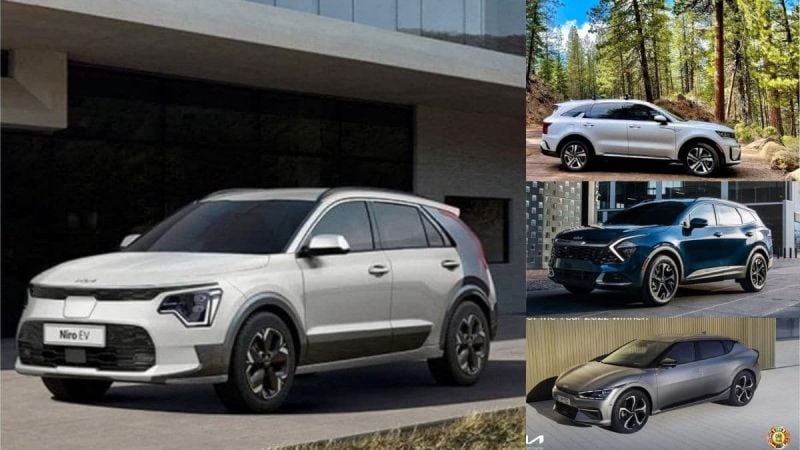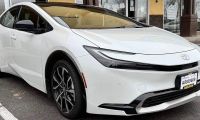I ask this question rhetorically, but I see similar ones pop up every week on social media, and it feels like there is at least a modest degree of uncertainty or misunderstanding about the differences in form and function between hybrid (HEV), plug-in hybrid (PHEV) and electric (EV) vehicles behind these questions. People, some of them anyway, genuinely don’t know enough about these different types of vehicles and they turn to the internet to find clarity. I want to provide that clarity and in the context of Kia’s line of HEV, PHEV and EV options since Kia is one of the leaders in electrification among mainstream manufacturers.
There are many requirements, factors and limits that some will, or should, use when deciding on a vehicle purchase. Universally price, intended use, availability, form factor, reputation, and many other attributes like passenger or cargo volume are criteria that may matter. All of those aside, why and how would someone choose between vehicles that are otherwise very similar except in the way that they are fueled and how they perform on that fuel? Kia provides shoppers with one or more electrified options across most of its SUV and crossover product lines, potentially making such decisions a bit more challenging.
Let’s use three Kia vehicle types as examples: crossovers, compact SUVs, and midsize SUVs and compare them in terms of their function so someone who is curious might better understand which electrified version would be a better choice. First, the crossovers. Kia makes a few, the Niro (a subcompact available in HEV, PHEV and EV versions) and the EV6 (an all electric compact crossover). In terms of function, the main differences besides size/interior volume and whether AWD is an option, is in how these different powertrains operate. An HEV runs on gasoline, has a small briefcase sized battery and electric motor(s) that can provide propulsion to the vehicle (but generally needs the support of the gas engine above certain speeds or beyond the first 1/3rd or so of accelerator travel). The Niro HEV is one of the most fuel efficient gas powered vehicles on sale in the U.S. today. It never needs to be plugged in to charge, and instead uses energy captured from braking or in excess from the gasoline powered engine. Their benefit is lower fuel consumption (typically around 10-30% less than a comparable gas model) and fewer emissions. Since they never have to be plugged in, people who don’t have access to an outlet to recharge their vehicle at home, at work, or at a public location may be better off choosing an HEV versus a car with a plug. Even though public charging options are becoming more common, public charging can end up costing more than gasoline would, depending on the per min or kWh rates and charging fees. PlugShare and similar apps are good ways to research charging availability and costs in any given area. In addition, for those who drive long distance highway trips on a near daily basis (and in this case long distance means more than 100-150 miles a day), HEVs may make more sense if charging at home and or at work isn’t an option because HEVs tend to get slightly better gas only efficiency than PHEV versions due to the PHEV’s larger, heavier batteries. PHEVs are designed to maximize efficiency for frequent short trips, daily charging, and only occasional long distance trips; buying one for use on long daily drives or frequent road trips may be wasteful since one would have to haul the extra weight of batteries that can’t be used without stopping to charge. But if you do have reliable access to charging, free/low cost 240V charging in particular, an EV like the EV6 may make more financial sense for those driving 100-300 miles on a daily basis. This is simply because EVs have lower cost per mile than HEVs as long as the price of electricity is reasonable. Over time, the per mile fuel costs really add up (to thousands of dollars in savings annually for those who drive the amounts I described). That savings can easily make a car like the EV6 or the Niro EV, which costs more up front than the HEV, cost less in the long run.
The per mile cost for a PHEV is where things get tricky. They can be about the same as an EV’s, depending on how you drive it. Not that per mile fuel cost is the ultimate deciding factor for everyone, but it's a great way to figure out how much “electrification” you need and which choice best fits your budget as PHEVs may cost thousands less than EV equivalents. Let’s look at Kia’s Niro PHEV, Sorento PHEV, and the forthcoming Sportage PHEV and compare those to HEV and EV scenarios. Regardless of the size of vehicle you're looking for, and whether you want AWD and other features or not, these 3 examples (in their 2023 model year) will have similar electric only ranges in the low to mid 30s and when running off gasoline get somewhere in the mid 30’s to near 50 mpg. All are clearly very efficient and prices will range from around $30,000 to $48,000 (excluding options). The EV6 (which would be most similar in size to the Sportage PHEV), is priced around $41,000 to $56,000 currently. The lower priced models of the EV6 will likely overlap with the more expensive Sportage PHEV trims (once pricing is announced) so other than dimensions and feature sets, for these two models, the shopper’s choice may come down to which costs more to own or drive. EV’s typically have less maintenance (without separate gasoline engine and emissions system to maintain), and fuel costs are only likely to be close for the PHEVs when about 70% or more of one's annual driving is done on short trips of 40 miles or less. The lower that percent of miles driven on shorter trips is, the more advantage the EV will have in fuel cost. Of course, EVs can be more limited in where they can drive long distances to and how long it takes to make those trips (since stopping to charge takes a little longer than getting gas and there are places where charging infrastructure is lacking). If you’re the kind of person that drives several hundred miles only on frequent weekend road trips to remote places or you need more passenger or cargo space than what a compact SUV offers, these are also scenarios where an HEV, or a PHEV depending, might better suit your lifestyle. Note, there are more options for hybrids in mid-size SUVs than EVs, for now, so if you need a larger electric vehicle and can wait a little while, next year and in the years following, there will be many more options. Which would be right for you? Please leave your questions or comments below.
Images provided by Kia.
Justin Hart has owned and driven electric vehicles for over 14 years, including a first generation Nissan LEAF, second generation Chevy Volt, Tesla Model 3, an electric bicycle and most recently a Kia Sorento PHEV. He is also an avid SUP rider, poet, photographer and wine lover. He enjoys taking long EV and PHEV road trips to beautiful and serene places with the people he loves. Follow Justin on Twitter for daily KIA EV news coverage.












